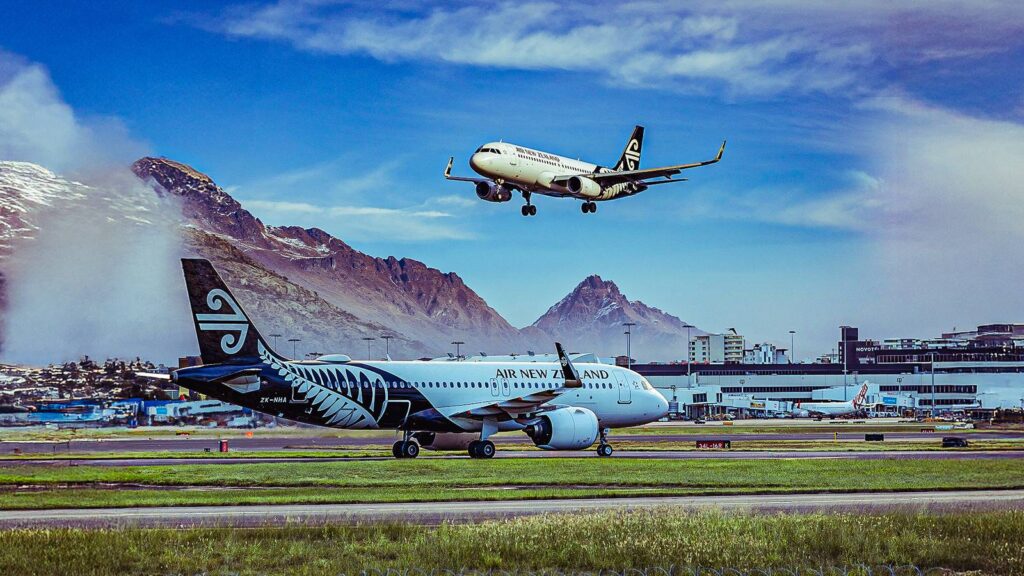
A scheduled Air New Zealand flight between Christchurch and Sydney was forced to make an emergency landing on Friday, October 24, after experiencing a hydraulic failure mid-flight. The flight, operating as NZ211, was halfway across the Tasman Sea when the issue was identified.
As a precautionary measure, emergency services at Sydney Kingsford Smith Airport (SYD) were on standby and met the Airbus A320neo upon its arrival. The aircraft landed safely and was immediately attended by emergency crews and an engineering team. A thorough inspection is now underway to ensure the aircraft’s safety before it returns to scheduled service.
Hydraulic Failure Over The Tasman Sea
The flight departed from Christchurch Airport (CHC) on October 24, with an initial schedule to leave at 06:35, although it was slightly delayed, departing at 06:56. The early morning flight to Sydney typically has a block time of three hours and 35 minutes, with a scheduled arrival at 08:15. However, as the aircraft was partially across the Tasman Sea, pilots discovered a hydraulic failure, necessitating an emergency landing at Sydney.
With no major diversion airports or land masses between Australia and New Zealand, the decision to proceed to Sydney was made swiftly. The aircraft landed at SYD by 08:17, greeted by emergency crews prepared for any eventuality. Passengers onboard described the experience as surreal but noted that everyone remained calm.
According to Nathan McGray, Air New Zealand’s Chief Safety and Risk Officer,
“Emergency services met the aircraft on arrival as a precaution. The aircraft landed safely, and our engineering team will now carry out inspections to ensure the aircraft is safe to return to service.”
Mid-Flight Notification and Passenger Impact
The Airbus A320neo, registered as ZK-NHC, is configured to seat up to 165 passengers in a single-class layout. Passengers on NZ211 were informed of the technical issue mid-flight and were briefed on emergency procedures. Currently, the aircraft remains on the apron at Sydney, pending further inspection before it can resume service.
The incident led to the cancellation of the corresponding service between Sydney and Queenstown (NZ232). Affected passengers were rebooked onto alternative flights via other key Air New Zealand hubs, including Auckland Airport and Wellington Airport.
Data from ch-aviation indicates that ZK-NHC is a six-year-old Airbus narrow-body aircraft, delivered to Air New Zealand in March 2019. The aircraft is designed for short-haul international operations, offering passengers seat-back entertainment screens and a choice of three fare types: seat only, ‘The Works’ (including movies, meals, and baggage), and Works Flexi for additional flexibility.
Air New Zealand’s Leadership and Future Outlook
The incident occurs as Air New Zealand welcomes its new Chief Executive Officer, Nikhil Ravishankar, who transitioned from the role of Chief Digital Officer. Nikhil has been with the airline since 2021 and has played a significant role in enhancing the carrier’s digital platforms.
Within his first month, Nikhil has already suggested the potential need for situational subsidies to maintain the airline’s domestic network, as reported by Radio New Zealand. Earlier this year, Air New Zealand canceled its Wellington to Invercargill route due to economic pressures. Nikhil highlighted that rising costs, such as jet fuel and wages, continue to impact airfare prices for New Zealanders.
To address these challenges, the airline is considering options like variable redemption, where discounted flights might exclude airpoints earnings, or increasing midday domestic flights. Air New Zealand, which is 51% government-owned, is projected to report a first-half loss of up to $31 million (NZ$55 million), attributed to lower passenger numbers and higher operational costs.
As the airline navigates these turbulent times, the focus remains on ensuring safety and operational efficiency, while also exploring innovative solutions to enhance passenger experience and maintain financial stability.






